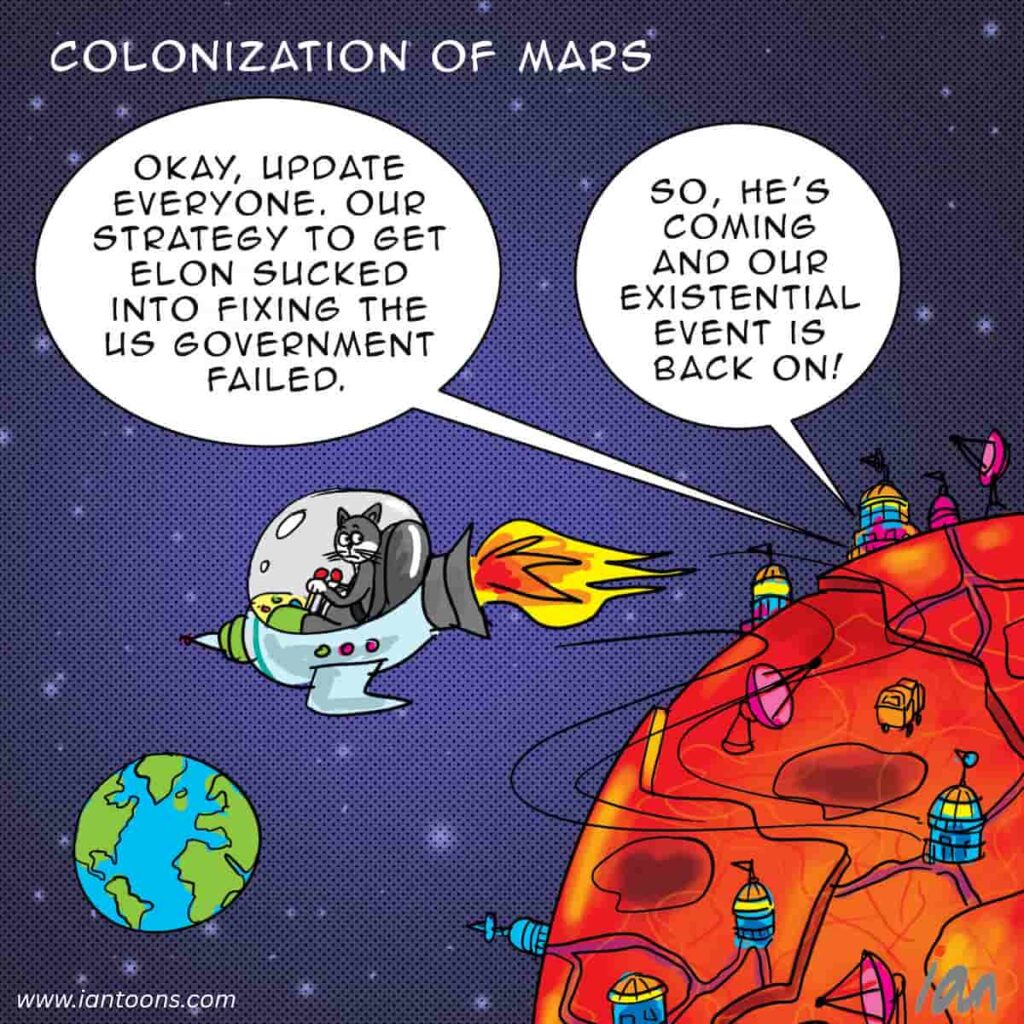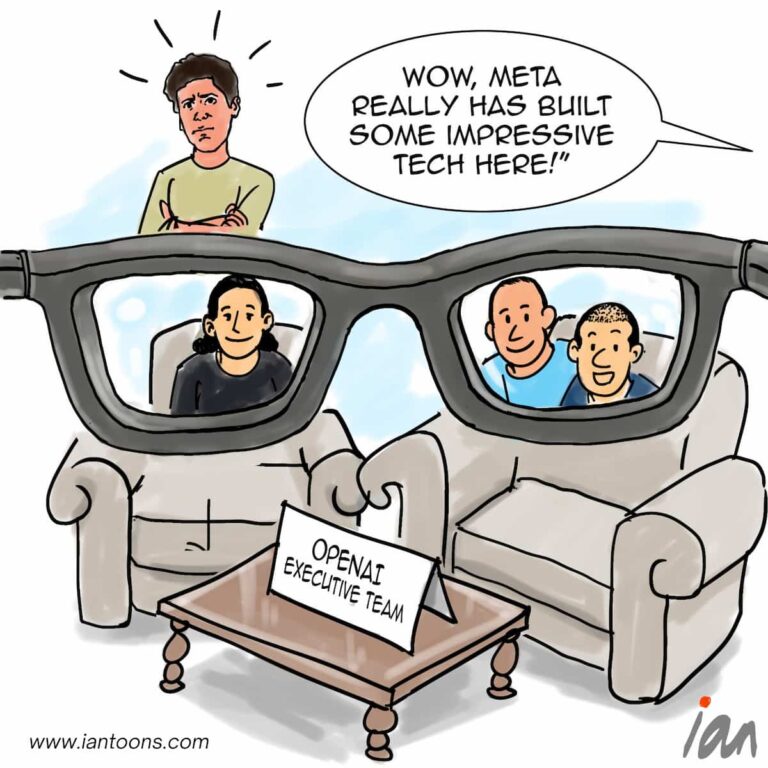Living space

Aliens watch with quiet dread,
Knowing Earth once left worlds dead.
Colonies rise, but at what cost –
A cosmic peace, maybe forever lost.
“Living Space” – A cartoon that illustrates how Mars colonization and the space economy are less than a decade away.
Since Yuri Gagarin’s 1961 flight, space exploration stalled due to high launch costs (up to $54,000/kg with the Space Shuttle), limited public funding, and weak commercial incentives.
SpaceX has changed this with reusable rockets like Falcon 9 ($2,600/kg) and Starship, which aims to cut costs below $100/kg and deliver over 100 tons per launch – enabling scalable Mars infrastructure. With dozens of annual launches projected, a 1,000-ton modular Mars base could be assembled within a decade, paving the way for permanent human presence supported by local resources and return missions.
Space also offers massive wealth potential through sectors like satellite internet (projected $50B+ by 2030) and asteroid mining, which could unlock trillions in rare metals. Companies like Reflect Orbital, which is planning to beam sunlight to solar farms at night, are early signals of a trillion-dollar orbital economy.
As investor Shaun Maguire puts it, investing in space infrastructure now is like “buying land next to the railroad stops before the railroads were built,” and he predicts a functioning Mars base by 2035. Even if space colonization still feels far off, its enabling tech, such as autonomous fabs, closed-loop agriculture, next-gen power systems, will transform life on Earth.
13
0
1






